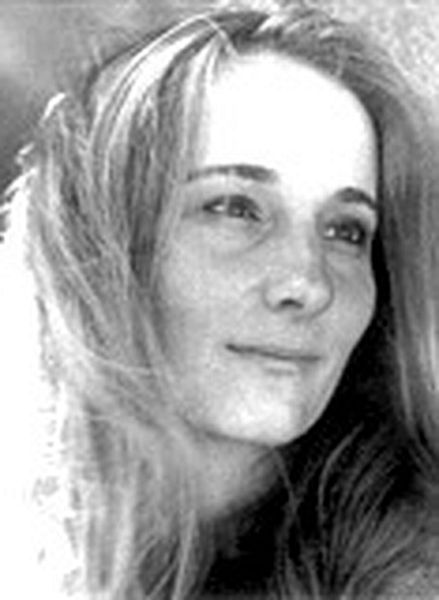Missing Person Photos
A missing person is a person who has disappeared and whose status as alive or dead cannot be confirmed as their location and condition are unknown. A person may go missing through a voluntary disappearance, or else due to an accident, crime, death in a location where they cannot be found (such as at sea), or many other reasons. In most parts of the world, a missing person will usually be found quickly. While criminal abductions are some of the most widely reported missing person cases, these account for only 2 to 5 percent of missing children in Europe.
By contrast, some missing person cases remain unresolved for many years. Laws related to these cases are often complex since, in many jurisdictions, relatives and third parties may not deal with a person's assets until their death is considered proven by law and a formal death certificate issued. The situation, uncertainties, and lack of closure or a funeral resulting when a person goes missing may be extremely painful with long-lasting effects on family and friends.
A number of organizations seek to connect, share best practices, and disseminate information and images of missing children to improve the effectiveness of missing children investigations, including the International Commission on Missing Persons, the International Centre for Missing & Exploited Children (ICMEC), as well as national organizations, including the National Center for Missing & Exploited Children in the US, Missing People in the UK, Child Focus in Belgium, and The Smile of the Child in Greece.

Resources for Missing Persons
According to current statistics, 4,000 people in the United States go missing every day.
Sometimes a child suddenly vanishes from the bus stop or the local park or even from their own yard or bedroom. Or a teenager doesn�t return home after a walk to the neighborhood grocery store or a bike ride or a party with friends.
Other times, an adult is mysteriously absent from their job or neighbors haven�t seen them for several days, and family and friends haven�t heard from them either.
Missing Person Photos
Julianne Miller

Miller, date, approximate 1982
Date Missing 09/22/1982
Missing From
Old Saybrook, Connecticut
Missing Classification Endangered Missing
Sex Female
Race
White
Date of Birth 07/18/1955 (67)
Age 27 years old
Height and Weight 5'6, 110 pounds
Associated Vehicle(s) Brown pickup truck
Markings and/or Distinguishing Characteristics Caucasian female. Blonde hair, possibly blue eyes. Some agencies spell Miller's name "Julieanne."
Details of Disappearance Miller was a graduate student at the University of Hartford and worked part-time at a day care center in 1982. She lived with her boyfriend, James Clayton, in a cottage on Clinton Avenue in Old Saybrook, Connecticut. The couple had been together since 1981 and shared a passion for karate, in which Clayton held a black belt.
Miller's father transferred ownership of the cottage to his daughter sometime in 1981; Miller then added Clayton's name to half of the property. But Miller picked up a quit claim deed on September 20, 1982 in hopes of having Clayton sign away his property rights. She apparently no longer wanted him to claim ownership.
Miller was last seen at approximately 10:00 p.m. on September 21, 1982 in the living room of the cottage. One of the two tenants she and Clayton had at the residence reported that Miller and Clayton were sitting on the living room couch watching television together at that time. The tenant stated that they seemed to be having an argument and tension was palpable in the air. Miller was never seen by anyone other than Clayton afterwards.
A witness told police that the furniture in Miller's cottage had been rearranged after her disappearance. Some couch cushions were missing. Clayton told the witness that he had sent the cushions to the dry cleaner's.
The official date listed as Miller's disappearance is the following day, September 22. Clayton did not report her missing to the authorities; Miller's father returned from a vacation on September 29 to discover she was nowhere to be found and called police. When questioned, Clayton claimed that he didn't want to cause trouble for Miller by reporting her as missing. He stated that her father requested she remain at the cottage during his trip and keep an eye on things.
Clayton claimed that he last saw Miller enter a brown pickup truck driven by an African-American male on September 22, 1982. The authorities found his statement odd, given that Clayton is African-American and owned an identical vehicle.
Miller left her car, dog and purse at the cottage. Investigators found the quit claim deed for the residence inside her purse, but Clayton had not signed it. Many believed that the couple had an argument the night Miller's tenant last saw her and the fight revolved around the property.
Clayton reportedly began calling Miller's parents late at night for months after her disappearance. Her father never mentioned what was discussed during the conversations, but other relatives said that her family was frightened.
Clayton requested that the two tenants move out of the cottage a few weeks after Miller vanished. Police administered polygraph tests to both tenants and they passed. Clayton refused to take a lie detector test.
Blood was discovered on the cushions and springs of the living room couch in the Old Saybrook cottage, but DNA testing was not available in 1982. Investigators were unable to determine if the blood matched Miller's type at the time. Clayton told them the blood was from a dog. Portions of the living room carpet had white spots present, signaling the possibility that someone had cleaned the spaces with a bleaching product to remove stains.
Miller's family reported that her grandmother's wedding ring was missing, along with several other pieces of fine jewelry. The ring was recovered at a pawn shop in New Haven, Connecticut several months after Miller's disappearance. Clayton's brother reportedly sold the item.
Authorities named Clayton as the prime suspect in Miller's disappearance before the end of 1982, but he was never charged in connection with the . They believe he murdered Miller at the cottage, then buried her body somewhere on the property, which extends near the Deep River and borders the Cockaponset State Forest in Connecticut.
In May 2002, Clayton was convicted in military court of attempted murder and sentenced to five years in prison. He was a captain in the Army medical corps and was stationed in Schofield Barracks in Honolulu, Hawaii in November 2001, when prosecutors say he fractured a military officer's skull with a hammer during a robbery attempt.
Clayton says he blacked out and could not remember the incident. He is currently incarcerated in Fort Leavenworth, Kansas.
After his conviction, investigators began again to try to link Clayton to Miller's disappearance. They re-interviewed witnesses and began re-testing the blood on the couch for DNA. He has not been charged in connection with her , however, and it remains unsolved.
Investigating Agency
Old Saybrook Police Department
860-395-3140
Connecticut State Police
860-685-8000
Other
The Hartford Courant
NewsLibrary
Connecticut Division of Criminal Justice
The New Haven Register
Missing Person Photos
A missing person is a person who has disappeared and whose status as alive or dead cannot be confirmed as their location and condition are unknown. A person may go missing through a voluntary disappearance, or else due to an accident, crime, death in a location where they cannot be found (such as at sea), or many other reasons. In most parts of the world, a missing person will usually be found quickly. While criminal abductions are some of the most widely reported missing person cases, these account for only 2 to 5 percent of missing children in Europe.
By contrast, some missing person cases remain unresolved for many years. Laws related to these cases are often complex since, in many jurisdictions, relatives and third parties may not deal with a person's assets until their death is considered proven by law and a formal death certificate issued. The situation, uncertainties, and lack of closure or a funeral resulting when a person goes missing may be extremely painful with long-lasting effects on family and friends.
A number of organizations seek to connect, share best practices, and disseminate information and images of missing children to improve the effectiveness of missing children investigations, including the International Commission on Missing Persons, the International Centre for Missing & Exploited Children (ICMEC), as well as national organizations, including the National Center for Missing & Exploited Children in the US, Missing People in the UK, Child Focus in Belgium, and The Smile of the Child in Greece.

Resources for Missing Persons
According to current statistics, 4,000 people in the United States go missing every day.
Sometimes a child suddenly vanishes from the bus stop or the local park or even from their own yard or bedroom. Or a teenager doesn�t return home after a walk to the neighborhood grocery store or a bike ride or a party with friends.
Other times, an adult is mysteriously absent from their job or neighbors haven�t seen them for several days, and family and friends haven�t heard from them either.
Missing Person Photos